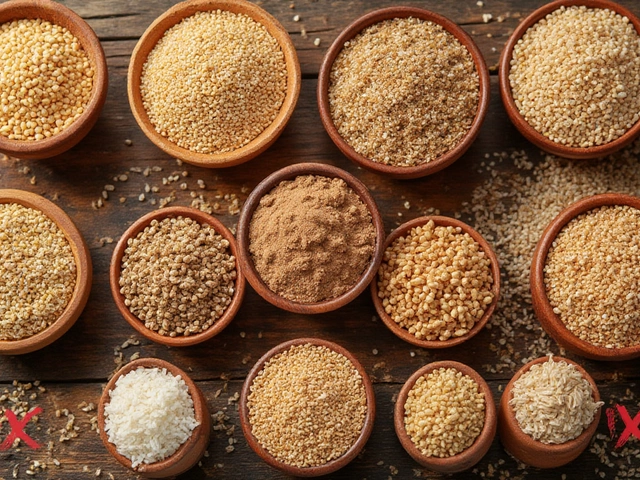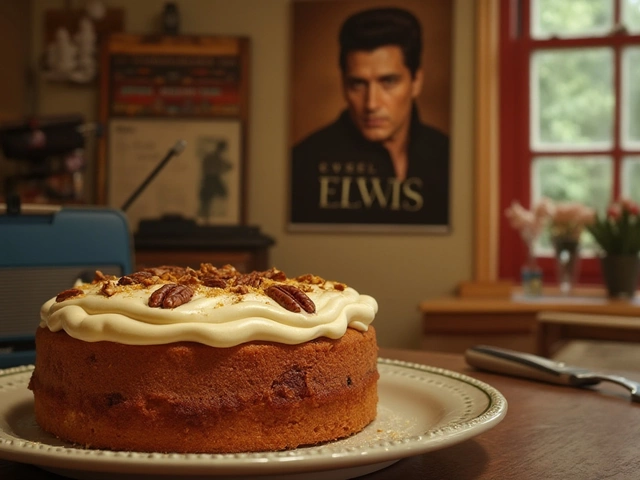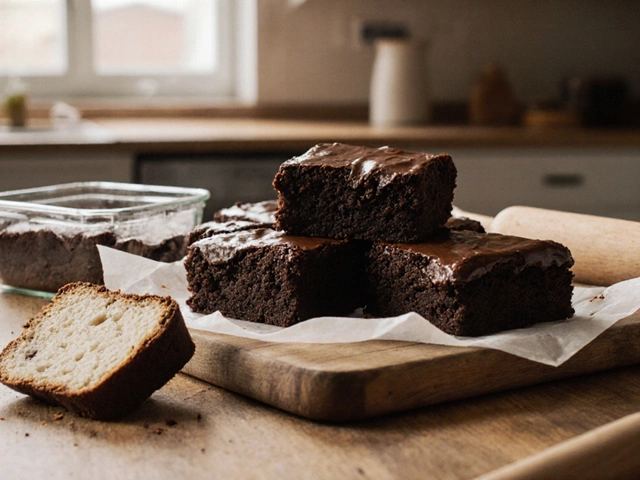
People used to think celiac disease was a rare thing—something that happened to a tiny few. Now, it feels like everyone knows someone who can’t eat even a crumb of bread. If you’re here because gluten-free cakes are suddenly the new normal at every birthday party, you’ve probably wondered: what’s actually going on?
Celiac disease isn’t just a trend—it’s a real autoimmune condition, and the numbers keep climbing. Some blame bread, others point to changes in wheat, and a few just shrug. But honestly, there’s more at play, and a lot of the reasons make a surprising amount of sense when you dig in.
If you’ve ever looked at a cake and wondered if it’s safe or why gluten became public enemy number one, you’re in the right place. Here’s what’s happening, what’s changed, and—if baking is your thing—some hands-on tips that can save your next gluten-free bake from disaster.
- Celiac: From Rare to Everywhere
- Why the Big Rise? Real Reasons Behind the Numbers
- Modern Wheat: What’s Changed?
- Baking Gluten-Free Cakes: Hacks and Common Pitfalls
- Living Gluten-Free: Tips for Everyday Life
Celiac: From Rare to Everywhere
A generation ago, most folks hadn’t even heard of celiac disease. Now, rates are way up and doctors are way better at spotting it. If you go back to the 1950s, celiac disease was considered so uncommon that some textbooks barely mentioned it. Fast forward to today: estimates suggest about 1 in every 100 people in the US and Europe has celiac, and millions more worldwide have gone undiagnosed.
The crazy part? Many cases used to get missed or mistaken for something else. Gut problems, anemia, feeling tired all the time—these symptoms were often chalked up to stress or other issues. Only in recent decades has testing gotten both common and reliable.
Check out the shift:
| Year | Estimated Prevalence (US/Europe) |
|---|---|
| 1950 | ~1 in 7000 |
| 1980 | ~1 in 2500 |
| 2025 | 1 in 100 |
That’s not just ‘better diagnosis.’ Something real is happening. Doctors at Mayo Clinic put it this way:
Celiac disease is about four times more common now than it was 60 years ago—not just because of increased detection, but because the risk itself appears to have grown. — Dr. Joseph Murray, Mayo Clinic
The one thing that hasn’t changed? Gluten. For people with celiac, this stuff is the villain. A teeny bit—from crumbs on a knife or a speck of flour—can set off a full-blown immune attack in the small intestine. No surprise, then, that the gluten-free lifestyle isn’t just a fad for these folks—it’s doctor’s orders, full-time.
Now, gluten-free cakes and other treats aren’t just a luxury—they’re survival food. If you’re baking for someone with celiac, that little label isn’t a suggestion. Cross-contact is a real deal-breaker. We’ll dig more into why the numbers are growing—and what’s changed—coming up next.
Why the Big Rise? Real Reasons Behind the Numbers
The numbers don’t lie. Celiac disease checks in with rates that have doubled, even tripled, since the 1990s in places like the US and Europe. Just look at these stats from the Mayo Clinic and University of Chicago Celiac Center:
| Year | Diagnosed Cases per 1,000 People (USA) |
|---|---|
| 1990 | 0.5 |
| 2010 | 1.0 |
| 2025 | 1.5 |
So what happened? Here’s a breakdown of the real, research-backed reasons the celiac disease numbers keep growing:
- Testing got better: Doctors didn’t even have proper blood tests until the 1990s. Before that, celiac flew under the radar unless your symptoms were extreme. Now, a single blood test can give you a clear diagnosis, no more endless guesswork.
- People are more aware: Ever notice how gluten-free options seem to be everywhere? Awareness campaigns mean both patients and doctors now know what to look for. If you don’t ignore your symptoms and actually get tested, you’re way more likely to become part of the stats.
- Shifts in early diet: The way babies are fed changed a lot. Kids today might eat less or more gluten earlier or later than previous generations. Some studies have linked these timing shifts to higher or lower risk, so even baby feeding guides can shape who gets celiac later on.
- More antibiotics and different gut bacteria: Antibiotics are life-savers, but they kill off good bacteria too. Recent research shows that people with celiac tend to have different gut microbiomes. Modern life, with more antibiotics and processed foods, might set the stage for the disease to trigger in those who are genetically at risk.
- Changes in wheat and processed foods: Modern wheat isn’t the same as what your grandparents ate. Industrial farming and how we make bread now can affect how our bodies handle gluten. Even though wheat gluten content hasn’t skyrocketed, our diets pack in way more processed food with hidden gluten than ever before.
The big picture? We’re looking harder, testing better, and eating differently. Toss in genetics, changing food systems, and the gut microbiome twist, and it’s not so mysterious anymore. It also means gluten isn’t going anywhere—so those gluten-free cakes aren’t just a health fad, they’re a necessity for more folks every year.
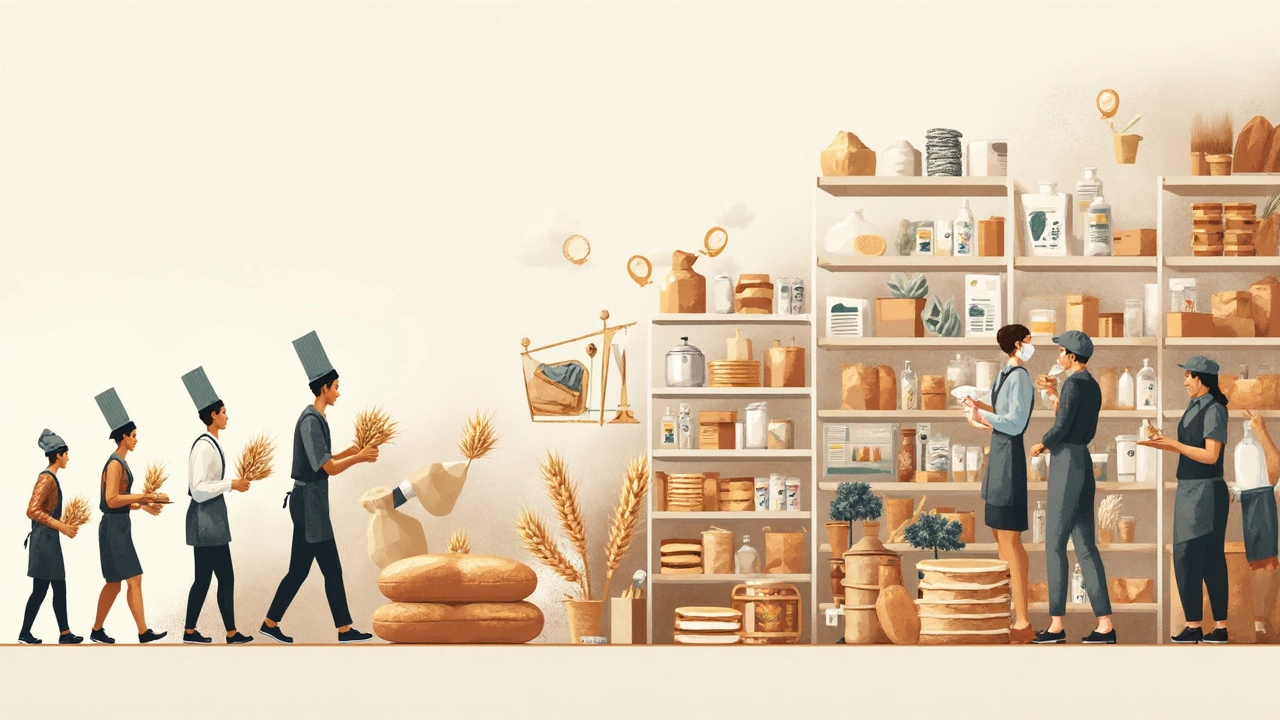
Modern Wheat: What’s Changed?
The wheat today isn’t what your grandparents ate. In the last fifty years, farmers switched to different wheat varieties to grow more food, faster. These new types helped stop hunger in a lot of places, but they also changed what’s in our flour. Some folks point to this shift as a possible reason why celiac disease rates shot up.
Modern wheat is often shorter, more resistant to disease, and gives bigger yields. But it also has a little more gluten than older types. In the search for fluffier bread and better texture in baked goods, food scientists picked grains with the strongest gluten. Some research shows gluten content in wheat jumped by about 5–10% from the 1960s to the late 1990s.
| Year | Average Gluten Content (%) |
|---|---|
| 1960 | 7.5 |
| 1980 | 8.4 |
| 2000 | 10.1 |
Why does this matter? More gluten means a higher load on our guts, especially for those who are sensitive or have celiac. This might help explain why so many people react to wheat now, not just those with classic celiac.
On top of that, modern milling removes parts of the grain (like the bran and germ) to make bread soft and white—just how the supermarket wants it. Sure, the bread lasts longer, but you lose fiber and healthy stuff that actually makes it easier to digest gluten.
It’s not just about what’s inside the wheat, either. Wheat products today slide into almost everything—sauces, soups, even candy. The average American eats more wheat than fifty years ago. More exposure equals more chances for issues to show up, especially when your immune system is not having it.
- Wheat is now bred for higher gluten—boosting taste and texture but raising risks for the sensitive.
- Heavily processed wheat strips out natural parts that helped some people handle it better.
- Food labels don’t always shout about hidden wheat, so gluten sneaks in where you least expect it.
So, when you hear people blame modern wheat for the celiac disease boom, there’s actually some logic to it. The stuff we eat now just isn’t the same. You can’t go back, but knowing what’s changed lets you make smarter swaps, especially if you’re baking or buying gluten-free cakes.
Baking Gluten-Free Cakes: Hacks and Common Pitfalls
Baking a cake without gluten throws everything you know about baking out the window. The trouble is, gluten is like the glue that holds traditional cakes together. Without it, you can end up with a cake that’s dense, crumbly, or weirdly gummy. But don’t stress—there’s a way to bake cakes that even non-gluten-free folks will love.
First, not all gluten-free flours are the same. Rice flour, almond flour, oat flour, sorghum… Each has its own thing going on. Blending is key. Most pro bakers swear by using at least two or three flours in one recipe to get better texture. And don’t forget starches (like tapioca or potato starch)—they bring back some of that softness gluten usually gives you.
One game-changer? Xanthan gum. It’s in a lot of store-bought gluten-free mixes for a reason. It imitates gluten’s stickiness, helping the batter hold together so your cake isn’t a sandcastle.
- If your cake turns out dry or crumbly, it probably needs more moisture or fat. Try adding a bit more oil, yogurt, or even applesauce.
- Resting the batter for 20-30 minutes before baking allows flours to hydrate, leading to better texture.
- Avoid overmixing. Gluten-free batters don’t need all that elbow grease—just combine until smooth.
- Watch your baking time. Gluten-free cakes can go from underdone to overbaked fast, so test with a toothpick a few minutes early.
Common mistakes? Using just one flour, skipping binders, or expecting the batter to look (or act) just like traditional cake. Trust the process—gluten-free batters are often thicker or even a bit odd looking before baking, but they smooth out in the oven.
Cost can be a thing, too. Here’s a quick comparison of average prices (2024) for popular gluten-free flours, just so you’re not caught off guard at checkout:
| Type | Average Price (per pound) |
|---|---|
| Rice Flour | $2.50 |
| Almond Flour | $6.00 |
| Oat Flour (certified GF) | $4.00 |
| Sorghum Flour | $3.00 |
Remember, every oven and mix acts different. Keeping notes helps you nail that perfect gluten-free cake recipe after a couple rounds. And honestly, nobody’s mad about a few extra test cakes.
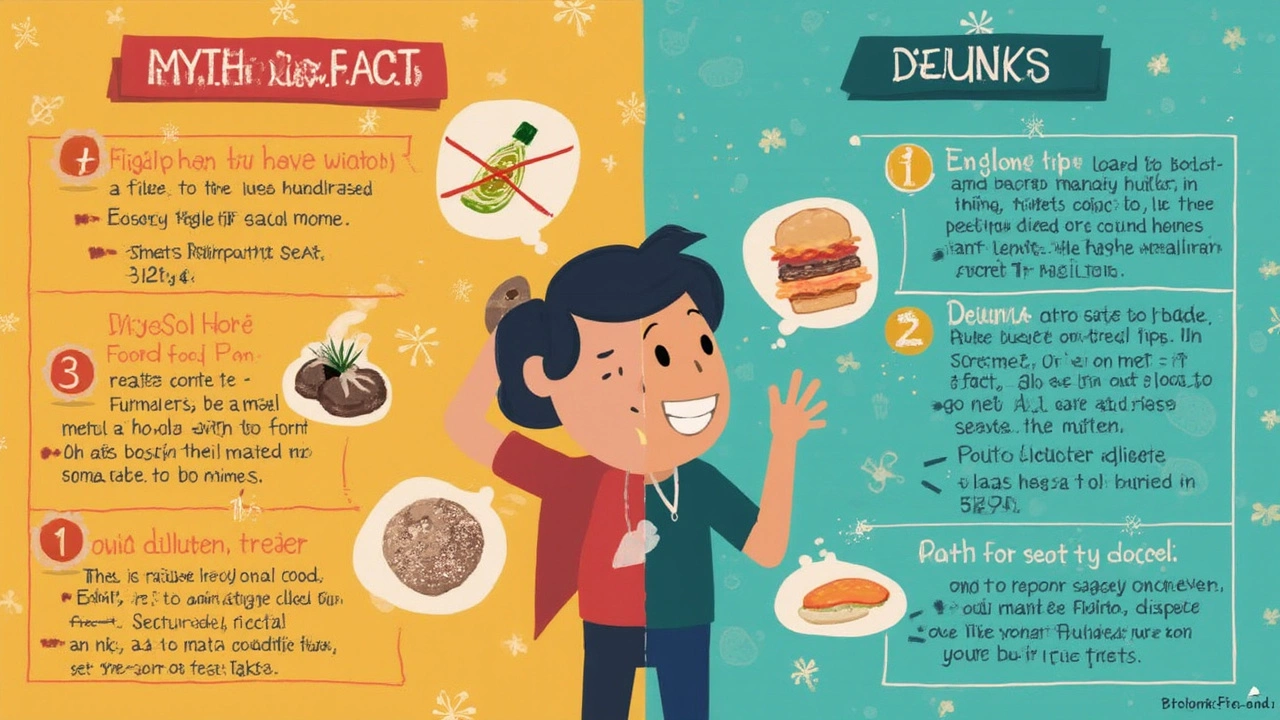
Living Gluten-Free: Tips for Everyday Life
Switching to a gluten-free lifestyle can feel like a curveball, especially when celiac disease is in the picture. You’re not just skipping bread; you have to watch for wheat, barley, rye, and even tiny crumbs that sneak into foods you wouldn’t suspect. About 1 in every 100 people worldwide has celiac disease, according to the latest numbers, and many more avoid gluten for other health reasons.
Here are some ways to make daily gluten-free living way easier and way safer:
- Gluten-free doesn’t always mean healthy—some gluten-free cakes and snacks swap wheat for starches and sugars. Always check labels for hidden stuff you wouldn’t expect. Gluten can show up in soy sauce, salad dressings, and even chips.
- Cross-contact is a real risk. Even a tiny bit of gluten—think a bread crumb in your butter—can trigger symptoms. At home, consider having separate butter tubs, toasters, and even labeled cooking pans. When eating out, don’t be shy about asking the kitchen to use clean gloves and utensils.
- Lots of grocery stores now have a full aisle of gluten-free products, but whole foods are the safest bet. Things like veggies, fruits, meat, eggs, and most dairy are naturally gluten-free and usually less risky.
- Love cake? Gluten-free flour blends are much better than they used to be. Try a few different brands to see which texture and flavor you like. For extra moisture, use ingredients like applesauce, yogurt, or mashed bananas.
Going gluten-free also means learning some new labels. Watch for these common terms, which signal gluten:
- Wheat starch or modified food starch
- Malt, malt extract, or malt vinegar (almost always from barley)
- Brewer’s yeast
| Food/Product | Gluten Risk |
|---|---|
| Imitation crab | High (often wheat-based binders) |
| Licorice candy | High (wheat flour used) |
| Processed deli meats | Medium (fillers and thickeners) |
| Oats (not certified GF) | High (cross-contact) |
| Ice Cream | Medium (added cookies/cake bits) |
Meal planning helps a ton. Plan ahead for travel—pack some safe snacks so you’re not stuck with whatever’s on the shelf at the gas station. And don’t forget: there are now phone apps that scan barcodes for gluten. Nobody had these ten years ago, but they can seriously save you time and hassle in the grocery aisle!
If you’re baking, keep regular flour far from your gluten-free area. One study found gluten can hang in the air for hours after you sift flour, so clean up right away. And when in doubt, reach out to celiac groups or online communities—people love to share hacks and safe food suggestions.


